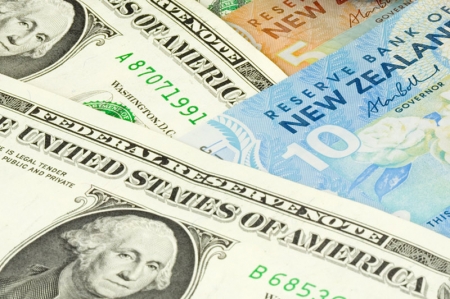Forex
Asia FX rises on Fed pivot hopes; NZ dollar boosted by hawkish RBNZ


Investing.com– Most Asian currencies rose on Wednesday as less hawkish signals from Federal Reserve officials ramped up hopes for an early interest rate cut in 2024, which put the dollar near four-month lows.
The was the best performer for the day, rallying nearly 1% after the Reserve Bank of New Zealand , but flagged potential rate increases in 2024 as inflation remained sticky.
The RBNZ hiked its forecast for peak interest rates in 2024- which saw analysts at Westpac now forecasting a 75% probability of an at least 25 basis point hike in the coming months.
Asia FX up, dollar near 4-mth low after Fed officials talk pivot
Broader Asian currencies advanced after Fed officials said in overnight comments that the bank was likely done hiking interest rates, and could even consider an early interest rate cut if inflation falls further.
Traders began pricing in an the Fed will trim rates by as early as March 2024. Focus was now on data- the Fed’s preferred inflation gauge- due later in the week.
The and plummeted following the Fed comments, and fell between 0.1% to 0.2% in Asian trade on Wednesday. The two indicators were also at their weakest level since early-August.
Most Asian currencies logged strong gains on the prospect of a Fed pivot, given that it points to easing pressure on risk-heavy yields. The rose 0.2% to a near two-month high, and moved further away from the 150 level. Focus this week was also on Japanese and data, due on Thursday.
But the yen curbed some recent gains after Bank of Japan board member Seiji Adachi said that it was still too early to consider a pivot away from the central bank’s ultra-dovish stance.
The rate-sensitive was flat after rallying 0.8% in overnight trade, while the led gains across Southeast Asian currencies with a 0.6% spike.
The lagged its peers, sticking close to record lows amid pressure from India’s large trade deficit. A spike in oil prices also weighed on the currency.
The also lagged its peers for the day as data showed (CPI) inflation grew less than expected in October, dampening bets on more interest rate hikes by the Reserve Bank of Australia. But CPI still remained well above the RBA’s target range, while core inflation remained sticky.
Chinese yuan firms, PMIs in focus
The rose 0.3% following a stronger daily midpoint fix from the People’s Bank of China, briefly touching a five-month high of 7.1201 to the dollar.
While the yuan saw a strong run of gains through November, concerns over a sluggish Chinese economy still persisted, especially after a string of weak economic readings for October. This kept the currency trading above the psychologically important 7 to the dollar level.
Focus this week was on purchasing managers index (PMI) data for November, due on Thursday. The reading is expected to show a sustained decline in , highlighting continued weakness in China’s biggest economic engines.

 Forex3 years ago
Forex3 years agoForex Today: the dollar is gaining strength amid gloomy sentiment at the start of the Fed’s week

 Forex3 years ago
Forex3 years agoUnbiased review of Pocket Option broker

 Forex3 years ago
Forex3 years agoDollar to pound sterling exchange rate today: Pound plummeted to its lowest since 1985

 Forex3 years ago
Forex3 years agoHow is the Australian dollar doing today?

 Cryptocurrency3 years ago
Cryptocurrency3 years agoWhat happened in the crypto market – current events today

 World3 years ago
World3 years agoWhy are modern video games an art form?

 Commodities3 years ago
Commodities3 years agoCopper continues to fall in price on expectations of lower demand in China

 Economy3 years ago
Economy3 years agoCrude oil tankers double in price due to EU anti-Russian sanctions





















